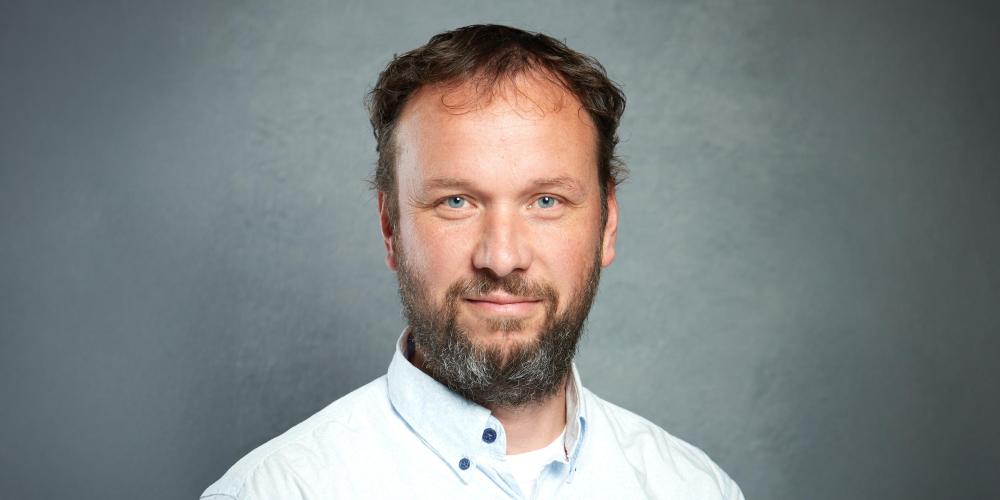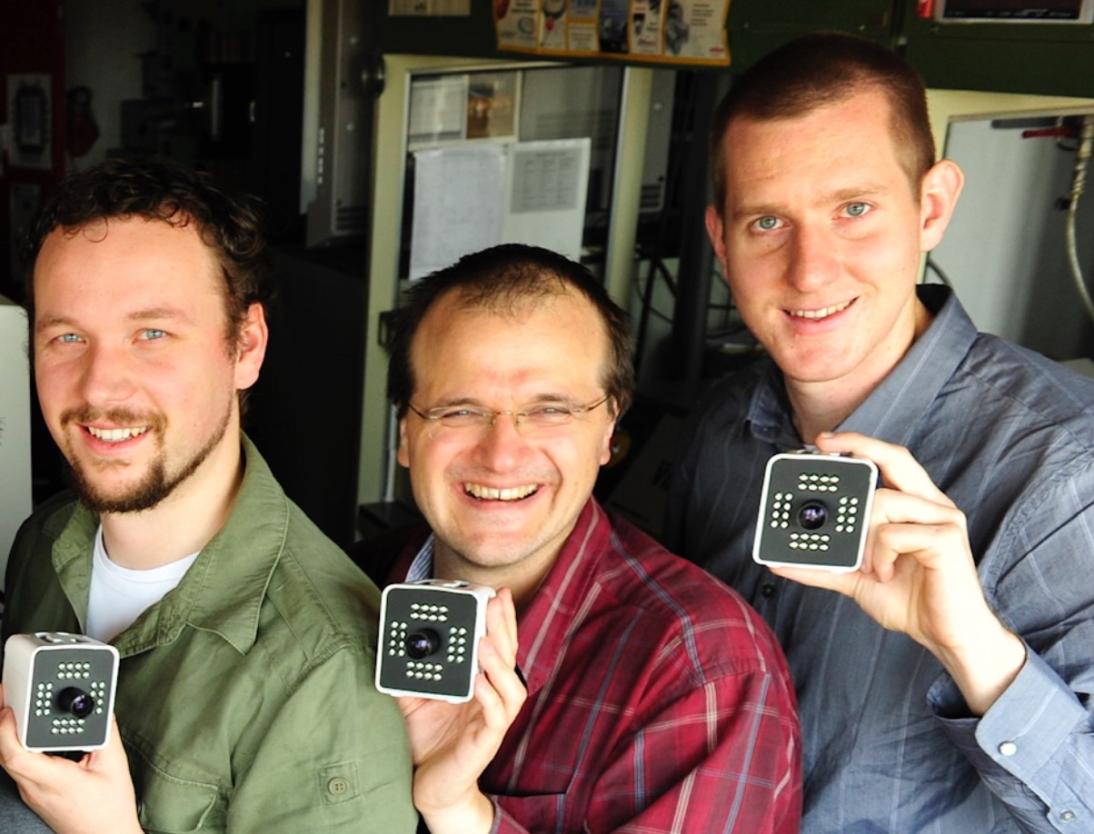
When Daniël Van Nieuwenhove graduated as a civil engineer from the Vrije Universiteit Brussel (VUB) in 2002, his professional journey began with an idea. Today, he is President of Sony Depthsensing Solutions, a world leader in cutting-edge depth-sensing technology. “I learned that technology alone isn’t enough to change the world.”
From PhD to global player, it sounds like a fairy tale, but it really happened. Your story began in a VUB lab?
Daniël Van Nieuwenhove: “That’s right. When I graduated as a civil engineer in 2002, I was ready to burn my books and start working in industry. (laughs) The year before, companies were fighting over engineers at job fairs. But after 9/11, job offers had almost disappeared, so I had to rethink my plans. Luckily, I’d just completed a master’s thesis on high-speed data communication under Professor Maarten Kuijk, and he offered me the chance to do a PhD on the same topic. I agreed immediately. Then one July morning, Maarten came to me with a different idea. He said, ‘I’ve been up all night thinking about it: we need to build 3D cameras.’ He explained this brilliant plan — that it should be possible to create 3D images containing depth information, instead of flat 2D pictures, by measuring time. Back then, that was pure science fiction. But I was sold right away and said yes.”

Daniël Van Nieuwenhove, Prof. Maarten Kuijk and Ward Vander Tempel with the first Optrima product
Was it immediately clear that you’d start a company?
“Pretty soon, we started talking to people like Professor Marc Goldchstein, who was guiding students towards entrepreneurship. It wasn’t hard to convince others of the potential of our plan. Still, it took seven years to design and develop the 3D time-of-flight sensors and cameras. The technology works by emitting an infrared signal at the speed of light. The time it takes for the reflected light to return is measured, allowing the camera to calculate depth. In 2009, with funding from the Brussels regional government, we founded the VUB spin-off Optrima. The goal was to commercialise this new technology and explore wider applications.”
“The 3D market was booming at the time, which played to our advantage. In 2010, Microsoft’s Kinect — a 3D motion sensor for the Xbox 360 — even made it into the Guinness World Records as the fastest-selling consumer electronics device ever. Smart TVs were also arriving on the scene, and manufacturers wanted to integrate 3D cameras for gesture recognition and gaming, similar to the Xbox. That sparked interest from telecom companies like Orange and Proximus too. Suddenly, all the big names in tech wanted in on this kind of technology. For us, that meant it was time for the next step. We decided to collaborate with Softkinetic, a ULB spin-off specialising in 3D vision and gesture recognition software. It turned out to be a golden match. We grew from a small team of about ten people to more than a hundred employees.”
“As a student, I believed technology could change the world. I’ve since learned it takes more than that”
You became CTO of an international player within a few years. What did you learn as an entrepreneur that no classroom could teach you?
“When I started engineering, I genuinely believed technology could change the world — that was my dream from an early age. But Marc Goldchstein taught me that you need more than that. You need business experience too. Because how do you actually bring a technology to market? It’s not always the best technology that wins. Think of the historic case of VHS tapes. Sony’s Betamax was technically superior, but VHS was marketed better and adopted more widely, so it won. That really opened my eyes.
The Optrima team, the VUB spin-off that laid the foundation for Sony Depthsensing Solutions
Since then, I started reading business books and studying case studies to understand what makes a successful entrepreneur. Marc Goldchstein also taught me the two key factors behind a successful spin-off: 1. the willpower, passion and teamwork to keep going even when things get tough, and 2. the presence of business experience in the team. That’s also why I started as CTO rather than CEO. The investors we spoke to were clear: ‘If you’re CEO, your company is worth less than if you bring in an experienced business leader who’s already made the beginner’s mistakes.’”
What did it mean for you when Softkinetic was acquired by Sony?
“Our story had become so big that moving to Silicon Valley felt like the logical next step. It wasn’t easy — not everyone on the core team wanted to relocate to the US. But we realised that if we truly wanted to change the world, we needed a multinational to help scale our technology. Sony seemed like the perfect partner — their vision completely matched ours. The result: in 2015, Sony acquired Softkinetic, and in 2017, Sony Depthsensing Solutions was born.”
What exactly do you do today?
“We’re still specialised in 3D depth-sensing and imaging technology. At BMW, for example, with Softkinetic we introduced gesture recognition, so drivers can adjust the car’s volume with a simple hand movement. Now we’re going a step further — actively monitoring the position of all passengers. This helps detect factors that are crucial for safety, like a driver’s posture or attention to the road. We’re laying the groundwork for this new system, which should become a reality by 2030. And we’re applying this expertise in many other fields too: robotics, smartphones, drones… In China, for instance, there’s a project where drones deliver your online order right to your doorstep within minutes. That’s the future.”
“We wanted to change the world, but to do that, a multinational needed to believe in our idea”
Daniël Van Nieuwenhove as a VUB student
Is there a future project you’re especially excited about?
“That’s a tough choice — 3D technology is endless. But right now, I’m fascinated by digital twins: virtual copies of physical objects, processes or systems, constantly updated with real-time data from sensors. Imagine that in the future, there’s a digital twin of you. You could buy clothes online without entering your measurements — and never need to return anything again. Or with a digital twin of your home, you could order furniture that fits perfectly. Ikea is already leading the way here.”
What role did the VUB play in your journey?
“VUB awakened my belief in the impossible. That started during my studies, where ‘out of the box’ thinking was encouraged. The combination of engineering and entrepreneurship really shaped me. And I can’t stress enough how important the close contact with professors was. After all, it all began with Professor Kuijk’s sleepless night and one brilliant idea. Even today, we still enjoy collaborating with him and with the VUB.”
What would you say to young researchers or students who dream of starting their own business?
“I think of one word: sparkle. Let your passion sparkle. Believe in yourself and your story, but stay grounded in reality. And be prepared to work hard.”
What does success mean to you today?
“I’m now President of the company. Success, for me, is the impact we create as a team — successfully translating our technology into products and business. But it also means seeing our people sparkle. Watching them find and follow their passion, and give the best of themselves. As Confucius said: ‘Choose a job you love, and you’ll never have to work a day in your life.’”
Bio Daniël Van Nieuwenhove
Daniël Van Nieuwenhove holds a PhD in engineering sciences (VUB). He is co-founder of Optrima and currently President of Sony Depthsensing Solutions. In 2009, he founded Optrima, a VUB spin-off specialising in 3D time-of-flight sensor technology. After merging with ULB spin-off Softkinetic, the company was acquired by Sony in 2015. Since then, Daniël has continued developing innovative depth-sensing solutions for applications in automotive, smartphone and robotics industries. His team is based in Brussels, close to the VUB Main Campus.